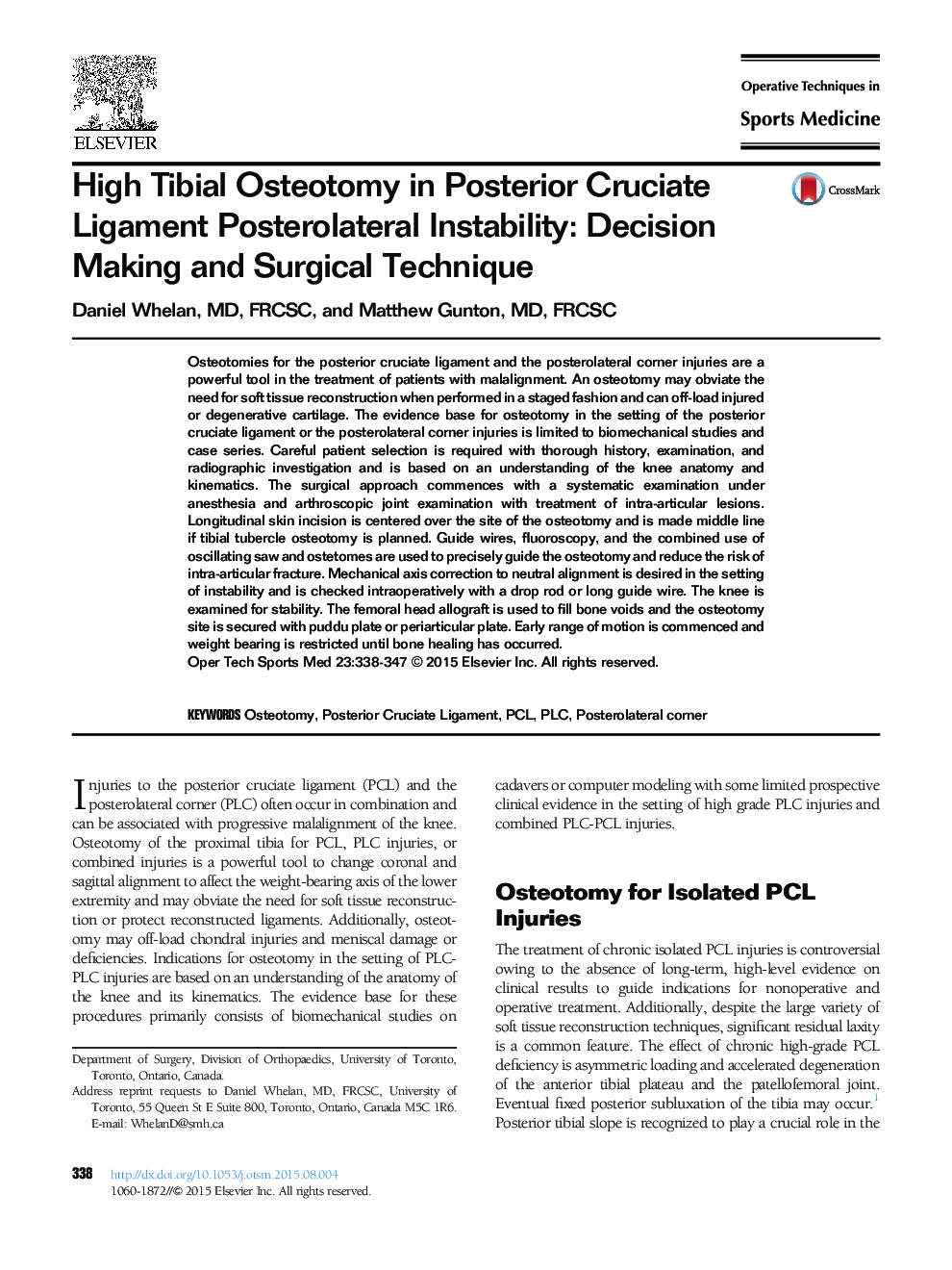| Article ID | Journal | Published Year | Pages | File Type |
|---|---|---|---|---|
| 4079462 | Operative Techniques in Sports Medicine | 2015 | 10 Pages |
Osteotomies for the posterior cruciate ligament and the posterolateral corner injuries are a powerful tool in the treatment of patients with malalignment. An osteotomy may obviate the need for soft tissue reconstruction when performed in a staged fashion and can off-load injured or degenerative cartilage. The evidence base for osteotomy in the setting of the posterior cruciate ligament or the posterolateral corner injuries is limited to biomechanical studies and case series. Careful patient selection is required with thorough history, examination, and radiographic investigation and is based on an understanding of the knee anatomy and kinematics. The surgical approach commences with a systematic examination under anesthesia and arthroscopic joint examination with treatment of intra-articular lesions. Longitudinal skin incision is centered over the site of the osteotomy and is made middle line if tibial tubercle osteotomy is planned. Guide wires, fluoroscopy, and the combined use of oscillating saw and ostetomes are used to precisely guide the osteotomy and reduce the risk of intra-articular fracture. Mechanical axis correction to neutral alignment is desired in the setting of instability and is checked intraoperatively with a drop rod or long guide wire. The knee is examined for stability. The femoral head allograft is used to fill bone voids and the osteotomy site is secured with puddu plate or periarticular plate. Early range of motion is commenced and weight bearing is restricted until bone healing has occurred.
